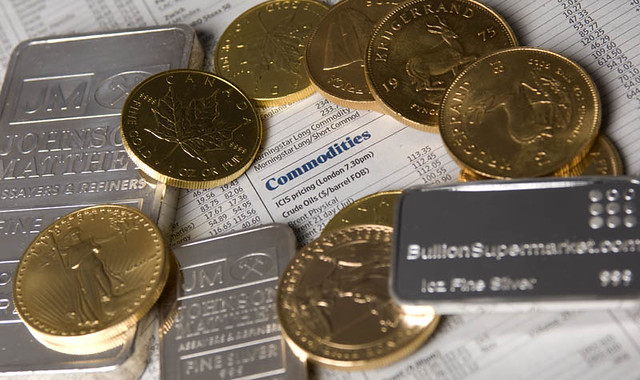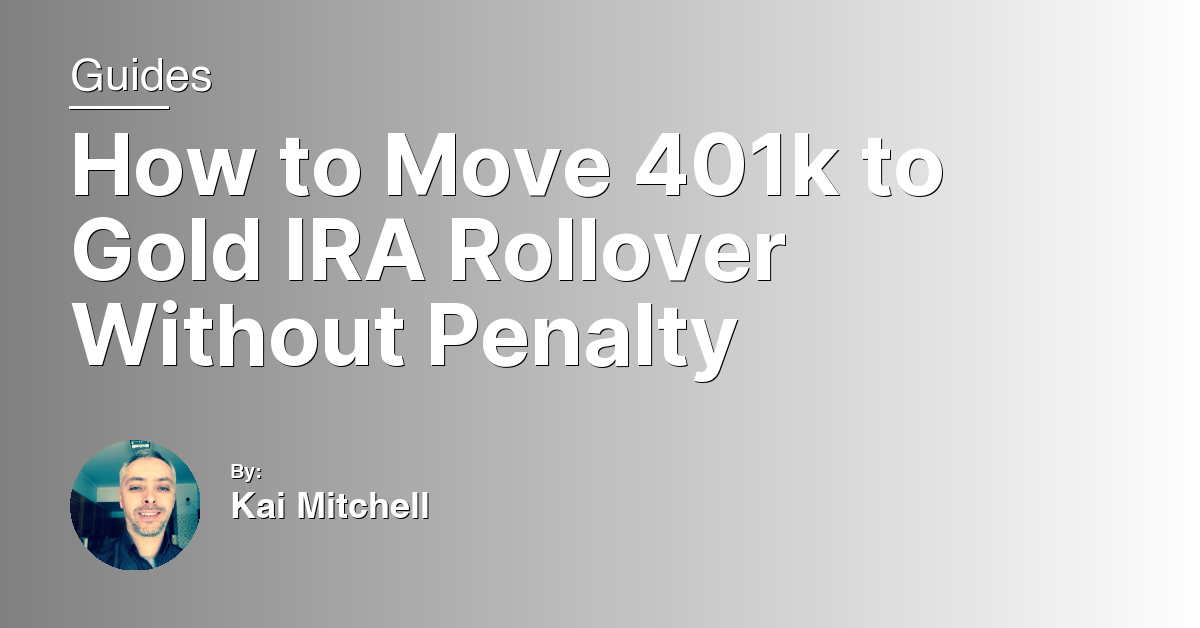Navigating the world of retirement investments can often feel like trying to find your way through a labyrinth, especially when it comes to precious metals. With the 2024 Comprehensive Gold and Silver IRA Guide for Beginners, we aim to illuminate the path for those looking to diversify their retirement portfolios with the timeless allure of gold and silver. Whether you’re a seasoned investor curious about the nuances of IRAs involving precious metals or a newcomer seeking a solid starting point, our guide promises to equip you with the knowledge you need to embark on your investment journey with confidence. Join us as we delve into the essentials, benefits, and strategies of integrating gold and silver into your retirement planning.
Key Differences from Traditional IRAs
Gold and Silver IRAs, often structured as Self-Directed IRAs, primarily differ from traditional IRAs in the type of assets they hold. While traditional IRAs focus on stocks, bonds, mutual funds, and paper currency, Gold and Silver IRAs invest in physical precious metals, offering a tangible hedge against economic instability and currency devaluation.
This investment strategy not only diversifies your portfolio but also provides a unique tax advantage. The growth of these precious metals within the IRA is tax-deferred, meaning taxes on gains are delayed until distribution. However, it’s crucial to have a custodian bank or a trusted entity to manage the IRA due to regulatory compliance and to ensure the physical metals meet the purity standards set by the IRS.
Another key difference is the potential for a gold and silver IRA to protect against inflation and market volatility, as these metals historically hold their value over time. This makes them an attractive alternative investment option, especially during times of economic uncertainty and recession.
Investors should be aware of the costs involved, including custodian fees and storage costs, which can differ significantly from those associated with traditional IRAs.
Choosing a Reputable Custodian
The right custodian should offer a variety of investment options, from mutual funds and bonds to alternative investments like futures contracts and options in gold and silver. They should understand the importance of diversification in managing risk and enhancing the potential for economic stability in your portfolio.
Additionally, consider a custodian that supports both Traditional and Roth IRAs, allowing for tax-deferred or tax-exempt growth of your assets. Their fees should be transparent and reasonable, without compromising the quality of service and the security of your investment.
Lastly, ensure your custodian can facilitate the actual purchase of physical gold or silver, reflecting true ownership and adding tangible value to your retirement savings amidst market volatility and inflation.
Opening Your Account
Next, complete the necessary paperwork with your chosen custodian to officially open your account. This process involves providing identification details and selecting the type of IRA that best suits your financial goals, whether it’s a Traditional IRA for tax-deferred growth or a Roth IRA for tax-free withdrawals in retirement.
Funding your account comes afterwards, where you can roll over funds from an existing 401(k) or 403(b) without incurring taxes or penalties, or you can make a direct deposit. It’s crucial to discuss with your custodian the options for purchasing gold and silver, whether through coins, bullion, or futures contracts, to align with your investment strategy and risk tolerance.
By carefully selecting your custodian and understanding the options available for funding and investing in your account, you set a strong foundation for leveraging gold and silver IRAs as a hedge against inflation, economic instability, and currency devaluation, enhancing your wealth and securing financial stability in retirement.
Funding Your IRA
Funding your IRA with gold and silver is not just about purchasing physical metals. The process requires a self-directed IRA, which gives you the flexibility to invest in a range of asset classes, including precious metals. This type of IRA is managed by a custodian bank that ensures regulatory compliance and handles the purchase of gold and silver on your behalf.
To fund your IRA, you can transfer funds from an existing retirement account, such as a 401(k), 403(b), or another IRA. Direct rollovers are a tax-efficient way to move assets without incurring immediate tax liabilities. Alternatively, you can make annual contributions within the IRS limits, potentially benefiting from a tax deduction on your contributions.
Investing in gold and silver can serve as a hedge against inflation and economic uncertainty, adding a layer of security to your retirement portfolio. These metals have historically maintained their value over time, offering a stable alternative investment amidst stock market volatility and fluctuating currencies.
Selecting Precious Metals
When selecting precious metals for your Gold and Silver IRA, diversification is key. Including a mix of gold, silver, platinum, and palladium can help balance your portfolio, hedging against stock market volatility and preserving your purchasing power during times of economic instability.
Consider the form of precious metals you’re investing in. While bullion coins and bars are popular for their purity and ease of valuation, they might not offer the same tax advantages as a mutual fund or futures contract in a self-directed IRA.
Research the historical performance of each metal within the context of your investment goals and timeline. Gold, traditionally seen as a hedge against inflation and currency devaluation, might be preferable for long-term wealth preservation. Silver, with its industrial applications, could offer more growth potential but with higher volatility.
Lastly, understand the tax implications. Investing through a Roth IRA could offer tax-free growth, whereas a traditional IRA provides tax-deferred growth, affecting the net value of your investment and income in retirement. Select metals and investment vehicles that align with your financial goals, risk tolerance, and tax situation to optimize your precious metals IRA.
Purchasing and Storing Metals
When purchasing metals for your IRA, it’s crucial to choose IRS-approved precious metals, such as gold, silver, palladium, and platinum. These assets can help diversify your portfolio, serving as a hedge against economic volatility and inflation, preserving your purchasing power.
Investing in a Gold or Silver IRA allows for tax-advantaged growth, either through tax deferral in a traditional IRA or tax-free growth in a Roth IRA. This can enhance the compound growth of your retirement savings, potentially leading to higher net returns compared to taxable accounts.
Upon purchasing, the metals must be stored in an IRS-approved depository to comply with IRA regulations. This ensures the safety and security of the metal, which remains under direct ownership within your retirement portfolio. Selecting a reputable custodian is essential for facilitating the purchase and storage process, as well as for maintaining IRS compliance and maximizing potential tax deductions or exemptions.
IRS Guidelines and Requirements
Navigating the IRS guidelines for Gold and Silver IRAs is crucial for investors looking to diversify their portfolio and hedge against economic volatility. These precious metals, recognized for their value retention across economic landscapes, can be a solid part of your retirement plan, similar to mutual funds, bonds, or stocks in a 401(k) or 403(b).
The IRS mandates that gold and silver must meet specific fineness standards to qualify. For gold, this is .995+ purity, and for silver, .999+ purity. These assets, once acquired, must be held in a custodial account by an IRS-approved custodian to ensure tax deferral benefits or potential tax deductions.
Investing in precious metals within an IRA allows for potential tax advantages, such as deferring taxes on gains until distribution, similar to other retirement assets. Remember, contributions can often be made with pre-tax dollars, reducing your taxable income and providing a tax benefit upfront.
Careful consideration of these guidelines will help secure your investment and align with your long-term financial goals, including income in retirement and maintaining economic stability amidst market fluctuations.
Understanding Rollovers and Transfers

Understanding Rollovers and Transfers is crucial for investors looking to diversify their portfolios with precious metals like gold and silver. A rollover typically involves moving assets from your current retirement account, such as a 401(k) or 403(b), into a gold and silver IRA without incurring taxes or penalties. This process allows the value of your investment to continue growing tax-deferred.
On the other hand, a transfer refers to moving assets between similar types of retirement accounts, for example, from one IRA to another. This is also a non-taxable event and does not attract penalties. Both methods are essential strategies for investors aiming to hedge against market volatility and economic recessions by incorporating gold as an investment into their retirement planning.
Strategically using rollovers and transfers can provide a tax advantage, ensuring that your investment in precious metals not only diversifies your portfolio but also optimizes your fiscal goals. It’s important to consult with a financial advisor to align these actions with your overall investment strategy and retirement planning objectives.
Assessing Fees, Costs, and Investment Options
When considering a Gold and Silver IRA, assessing fees, costs, and investment options is crucial for beginners. These IRAs often come with unique expenses, including setup fees, annual storage fees, and management charges, which can vary significantly between custodians. It’s essential to compare these costs as they can impact the overall value of your investment portfolio.
Investment options in Gold and Silver IRAs range from physical precious metals, such as coins and bullion, to precious metal mutual funds, futures contracts, and mining company stocks. Each asset class has its own risk and return profile, influenced by market economics, volatility, and the potential for recession. Diversifying your investments across these options can serve as a hedge against inflation and currency devaluation, aligning with the goal of preserving capital in uncertain economic landscapes.
Managing Your IRA for Long-Term Growth
Consider allocating a portion of your IRA to gold and silver mutual funds or futures contracts to gain exposure to these metals without having to hold the physical asset. This approach allows for easier liquidity and can be a tax-efficient way to invest in gold and silver, potentially offering tax deductions or exemptions.
Additionally, understanding the implications of investing in precious metals within different types of IRAs, such as a 401(k), 403(b), or a traditional or Roth IRA, is important. Each account type has its own tax treatment for contributions and withdrawals, affecting the overall growth of your investment. For example, Roth IRAs offer tax-free growth potential, making them an attractive option for investors looking to maximize their returns on investments like gold and silver.
Lastly, always keep your investment goal in focus. Whether you’re planning for retirement, looking to pass on wealth, or seeking to balance your portfolio against market risks, gold and silver can play a key role in achieving those objectives. By carefully considering your options and the unique landscape of precious metal investing, you can effectively manage your IRA for long-term growth.
Final Considerations for Investors
Before finalizing your decision to invest in a gold and silver IRA, consider how these precious metals fit within your broader portfolio. Unlike bonds or mutual funds, gold and silver offer a unique hedge against market volatility and inflation, ensuring your investment has a tangible value that can weather economic shifts.
Remember, diversification is key. Including gold and silver in your retirement plan, alongside more traditional assets like stocks and bonds, can provide a balanced approach to risk and reward. Be mindful of the tax implications; while gold and silver can be tax-efficient within an IRA, understanding the specifics of 401(k) or 403(b) rollovers is essential for maximizing tax deductions.
Lastly, consider the liquidity of physical gold and silver compared to paper assets. While they offer a solid hedge, accessing their value might not be as immediate as selling stocks or mutual funds. Always align your investment with your long-term financial goals and risk tolerance.
FAQs
How much money do you need to start a gold IRA?
You need a minimum purchase of $2,000 to start a gold IRA with Rosland Capital.
What is the truth about gold IRAs?
The truth about gold IRAs is that investors who withdraw funds may be subject to income tax on capital gains, just like with traditional pre-tax IRAs. Additionally, physical gold may be taxed at a higher rate due to being classified as a collectible by the IRS.
Should I put my IRA into gold?
Putting your IRA into gold can be a way to protect your wealth by reducing investment volatility, hedging against economic downturns, and providing a tax-efficient shelter for potential gains.

